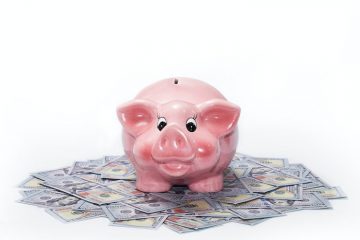Buy What Appreciates and Lease What Depreciates

The great John Paul Getty, who once held the title of richest man in the world, once said, “Lease what Depreciates – Buy what Appreciates,” as a fundamental principle that sensible businesses should follow. The majority of us in the leasing industry keep the claim in our toolbox as a way to persuade businesses to lease their equipment.
But What Exactly Does It Mean? Let’s break down the statement into its two parts and talk about why it makes perfect sense.
Firstly, “Buy What Appreciates” simply put, means owning assets which increase in value. The Rule of Increase, which relates to continuous growth, is typically the way prudent businesspeople conduct their lives. Growth in sales, in the size of the business, and in net worth.
Very few revenue-generating assets that support a company’s expansion increase in value. A production piece of equipment that costs $100,000 today might only be worth $60,000 or $70,000 in a year. The equipment may, in fact, lower costs by 20% and boost productivity by 30%, but if it is bought outright, it will eventually lower the company’s net worth.
Depending on the class they fall under, assets are depreciated at a pre-determined rate ranging from 10% to 50%. Only half of the depreciation in year 1 can be deducted as an expense because it is subject to the 50% rule. The net result is a long-term decline in the company’s net worth and a very gradual write-off for tax purposes.
Secondly, “Lease What Depreciates”, refers to shifting the ownership of any asset which decreases in value over time to a 3rd party, otherwise known as a leasing company. Leasing is a type of off-balance sheet financing, according to accounting standards, so the equipment does not show up as a liability on the balance sheet. The tax impact of a lease is accelerated by this because, if the lease is properly structured, the payments are viewed as expenses and are written off 100% from day one. The absence of the debt from the balance sheet has the effect of improving financial ratios like the debt to equity.
Most leasing companies operate according to a business model that emphasizes significant depreciation costs by including numerous assets on the financial statements. Leasing companies thrive on adding assets to their balance sheets, which in turn meets a significant need for businesses buying assets.
One last point: Many businesses have a strong tendency to own equipment, perhaps out of a sense of ownership. It should be noted that if an equipment purchase is supported by a bank loan or a line of credit, they do not actually own the equipment until the last payment has been made. The equipment is in fact under their ownership, and they list the depreciated value as an asset. However, the equipment won’t be theirs until the loan is fully repaid.
Lending money to businesses to buy equipment? Leasing will be used by businesses to purchase equipment, without a doubt. There’s no doubt about it; the aim of this piece is to examine the claim made by Mr. Getty wrote “Lease What Depreciates – Buy What Appreciates” many years ago to encourage people to consider purchasing equipment from a different angle.













